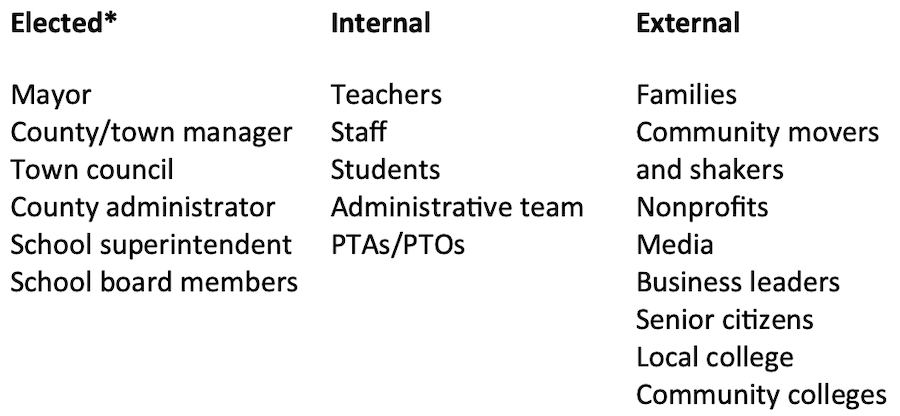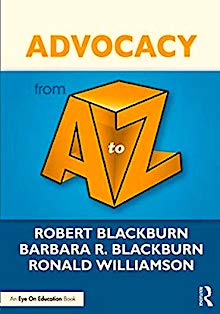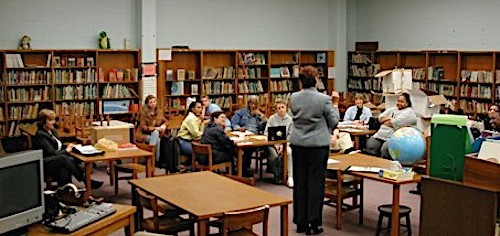How to Build Alliances in Your Local Communities
By Ronald Williamson and Barbara Blackburn

Ronald Williamson
School leaders try to avoid political entanglements. When they hear the term “politics,” they think of state or national issues, many of which maybe divisive.

Barbara R. Blackburn
But schools exist in a political environment, one where building relationships with political and community leaders is important.
Schools need resources, and almost all of those resources come from successful advocacy in a political environment – funding, building and infrastructure improvements, grants, and even acquiring positive public relations.
Success in this setting is the result of effective advocacy that includes developing and maintaining strategic alliances with local officials and other community leaders. A wide range of people help shape school and community policies, and the relationships you develop with them will determine the success or failure of your advocacy efforts.
This article will help you identify the different stakeholders in your school community and how they can help you be a successful advocate. The more people who join your advocacy effort, the more power your group will have to shape the outcome of decisions. Team efforts almost always outweigh individual advocacy.
The Three Groups Making Up Your Local Audience
Three types of local groups impact your school. First, there are those in elected positions. There are also internal stakeholders, those most closely connected to your school. The third group are external stakeholders. The following chart identifies the contacts that can be involved in your local efforts.

Not every one of these individuals or groups will support all of your advocacy efforts. Many of the individuals on this list will become your partners. Some may not. Knowing your supporters as well as those with opposing views gives you an advantage in planning. Get to know the movers and shakers in your community, both supporters and those less supportive.
Elected Officials
Many of the most important elected officials are those from your own community. They may be your neighbors or members of group you belong to. Locally, there are many opportunities for you to get involved with civic initiatives and advocate for your schools in positive ways.
Offer to help your local officials with research on issues if they do not have the staff for such work. Position yourself as a dependable source of pertinent and credible information on educational issues.
Work to remain nonpartisan when you participate in community roles. Do not burn bridges with your local elected officials on a particular issue – you are committed for the long haul. Keep in mind that local elected positions are often a springboard to positions at the state level. Support can be a two-street.
Local government committees and boards usually meet monthly and offer time for citizen input. Get to know the gatekeeper who controls access to the elected officials. Volunteer for study groups looking at an issue.
Almost all local governing bodies post information about their meeting schedule and agendas online. Use that information to sign up to speak where there is an opportunity for citizen input. Be prepared with your One-Page Fact Sheet and leave copies with participants to read. Local elected officials may be willing to meet with you to stay informed about key issues.
Identify places where informal groups of influential community members may gather like local coffee shops and restaurants. These informal gatherings frequently include gab sessions about daily issues. Establish yourself as a level-headed individual with community interests at heart.
When Ron was a principal, he quickly learned the importance of Saturday morning coffee and donuts at a local bakery. Most Saturdays the conversation was not about schools, but his participation built relationships. That meant that when a local bond issue was on the ballot, there was the opportunity to share information and build support among people who saw him as a community colleague.
You can’t do all the local advocacy by yourself. It will take a well-organized group with a well-designed plan to achieve your local advocacy goals. There are five keys for success when working with local officials.
Five Keys for Success
1. Always maintain your credibility as a source of information on education topics. A relationship built on trust is essential.
2. Time is a factor in working with local officials. Honor their willingness to listen by not being a time waster. Don’t be afraid to say you don’t know but be clear that you will get back to them with correct information.
3. Keep in contact by updating your local officials about the issues affecting the community they represent. Success stories can serve as great conversation starters and benefit all involved.
4. Supplement your communication with written material. The One-Page Fact Sheet is very effective because most officials are likely to read materials that are brief and to the point.
5. Follow up with officials with a thank you. Local officials need to be reminded that you value their support and feedback and understand their role in improving our communities and schools.
Internal Groups
Every school community includes a lot of stakeholders in the community. Employees, families, and even students themselves can be powerful advocates.
The challenge is that each group may have different interests, and each group may consist of subgroups that can complicate your message. We’ve found that elementary staff and elementary families often have different interests than middle or high school staff and families.
Of course there are overlapping interests as well, but it’s important to recognize the differences. This means that, when advocating, you will want to consider each group and the different strategies required to engage them.
Most schools and districts have regular newsletters that are shared with school staff and with families. Too often they are used solely as a vehicle to push out information rather than as a tool for also gathering and processing feedback. As part of your public relations media, include ways that families and staff can share ideas for stories or provide input on an issue.
As you work to build broad support among your stakeholders, make sure your newsletters and social media products don’t focus too narrowly on a few issues (like high school athletics and special events). Talk with teachers and families to figure out what information they want, and tailor your public media to respond to those interests.
Finally, recognize that social media has become the major way that young families learn about their child’s school. Almost all schools have an online presence and use social media to communicate with families. But recognize the need to also communicate with your faculty and staff through social media sites.
External Groups
When advocating with community groups, regular, consistent contact is key. You want to get your message across in a variety of ways, including in personal and public communications, such as calls and texts, letters to the editor or on a local blog. Get to know the editor of the local paper, online or print, and the person responsible for education.
Become familiar with local social media sites like NextDoor in addition to Facebook or X/Twitter. Service clubs are almost always looking for a speaker and a way to build relationships and share information. Involving students is another civic opportunity for the importance of advocacy. Not to be overlooked are older adults. Programs are always popular at senior centers, and many older people are vocal supporters of schools.
Final Thoughts
Because grassroots efforts are often the most effective ones, it’s important to remember to build your advocacy base locally. Local people have credibility with their community. These political relationships, built through a strong advocacy initiative, can have positive benefits for your school.

Dr. Ronald Williamson is Professor Emeritus of Educational Leadership at Eastern Michigan University. He is a former principal, central office administrator and executive director of the National Middle School Association (now AMLE). The author of numerous books on leadership, Ron is the co-author with Barbara R. Blackburn of 7 Strategies for Improving Your School (2020) from Routledge/Eye On Education.
Dr. Barbara R. Blackburn, a “Top 10 Global Guru in Education,” is a bestselling author of over 30 books and a sought-after consultant. She was an award-winning professor at Winthrop University and has taught students of all ages. In addition to speaking at conferences worldwide, she regularly presents virtual and on-site workshops for teachers and administrators. Barbara is the author of Rigor in Your Classroom: A Toolkit for Teachers, Second Edition (Routledge/EOE, 2023).
Ron and Barbara’s new book Improving Teacher Morale and Motivation: Leadership Strategies that Build Student Success is available from Routledge/Eye On Education.
Feature image by Joseph Mucira from Pixabay




































